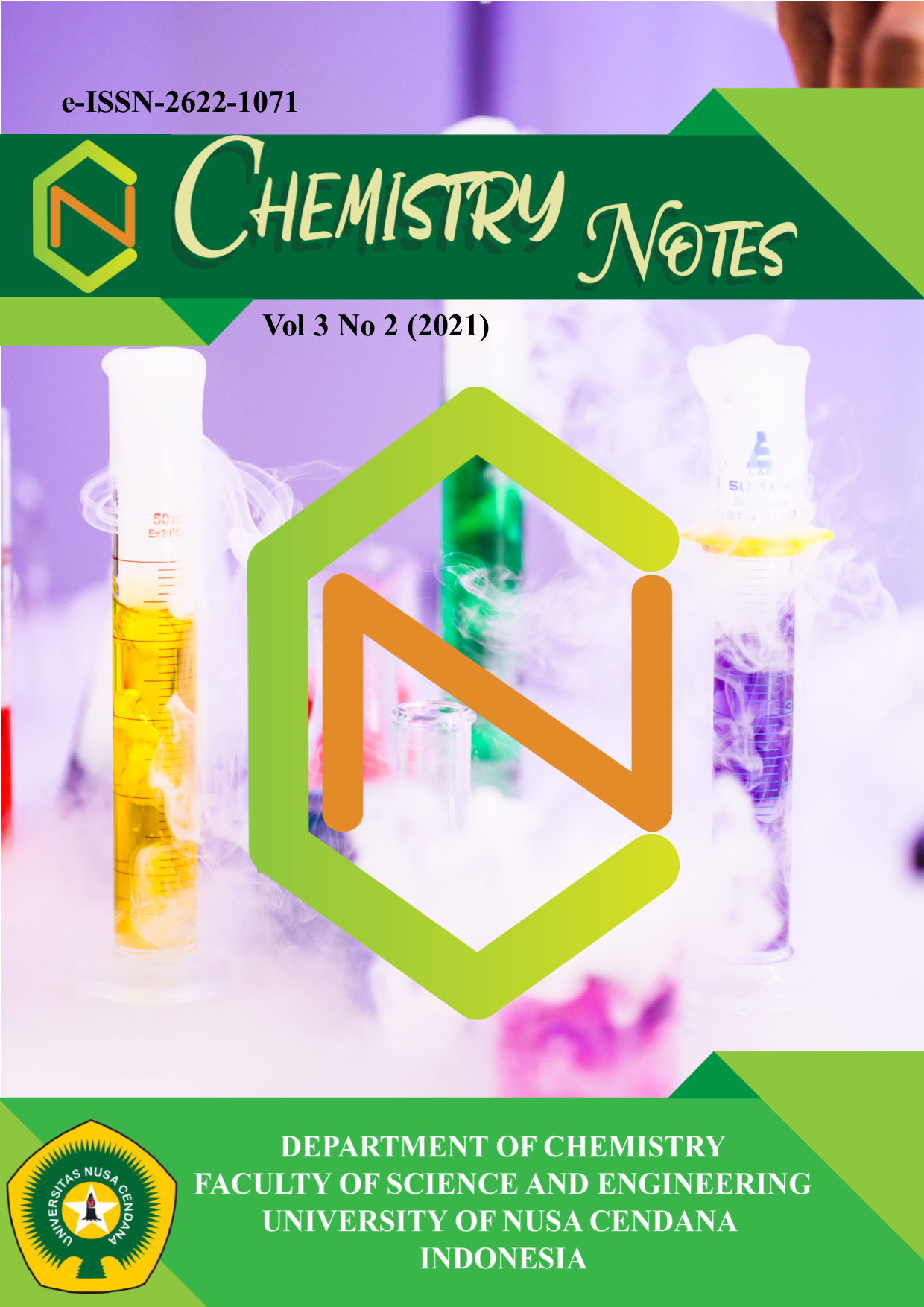Pengaruh Komposisi Daun Gamal (Gliricidia sepium Hbr.) dan Kotoran Sapi dengan Nutrisi Pisang terhadap Rasio C/N Kompos
Abstract
It has been done a research on the effect of the composition of gliricidia sepium Hbr. And cow dung with banana nutrition on the composting process on the C/N ratio. This research was conducted with the aim of knowing the effect of the composition and the length of time required for fermentation. Composting was made with a variety of cow dung : gliricidia sepium Hbr. In a ratio of 1:9, 1:1, 3:2, 7:3, 9:1, and 2:3 in % by using 25% banana nutrition and 100% water from the total weight of the manure. On this research was found that the optimal time is on 14th day with characteristic of compost that was produced, equal with the the Indonesia National Standar (SNI Kompos 19-7030-2004). The conclusion is the compcsition of cow dung and Gliricidia sepium leaves did not significant affect to the C/N compost ratio.
Downloads
References
2. Jusuf, L. Mulyati, A.M, dan Sanaba. 2007. Pengaruh Dosis Pupuk Organik Padat Daun Gamal Terhadap Tanaman Sawi. Jurnal Agrisistem, 3(2):80-89.
3. Agromedia. 2007. Petunjuk Pemupukan. Agromedia Pustaka. Jakarta.
4. Pangaribuan, D. dan Pujisiswanto, H. 2008. Pemanfaatan Kompos Jerami untuk Meningkatkan Produksi dan Kualitas Buah Tomat. Prosiding Seminar Nasional Sains dan Teknologi-II 2008 Universitas Lampung, 17-18 November 2008 ISBN: 778-979-1165-74-7 VII-11.
5. Bai, S., Kumar, M. R., Kumar, J. D., Balashanmugam, P., Kumaran, D. M dan Kalaichelvan, T. P. 2012. Cellulase Production by Bacillus subtilisolated fromCow Dung. Jurnal Library. 4(1):269-279.
6. Rismunandar. 1986. Bertanam Pisang. PT.Gramedia. Jakarta.
7. Mahadi, I., Darmawati dan Silvy Rachmadani Octavia. 2014. Pengujian terhadap jenis bioaktivator pada pembuatan kompos limbah pertanian. Jurnal dinamika pertanian vol 29. Hal 237-244.
8. Badan Standarisasi Nasional (BSN). 2004. Spesifikasi Kompos dari Sampah OrganikDomestik. Jakarta: SNI 19-7030-2004.
9. Miller, F. 1991. Biodegration of solid wastes by composting. London. Elsavier. 45P.
10. Alpandary, Heny. 2015. Isolasi dan uji efektifitas aktivator alam terhadap aktivitas dekomposisi dan kualitas kompostongkol jagung. Fakultas pertanian UMY. Yogyakarta.
11. Isroi, M. 2007. Pengomposan limbah kakao. Materi pelatihan TOT budidaya kopi dan kakao staf BPTP. Pusat penelitian kopi dan kakao. Jember.
12. Abdul Syukur, dan Nur I. 2006. Kajian Pengaruh Pemberian Maacam Pupuk Organik Terhadap Pertumbuhan dan Hasil Tanaman Jahe. Jurnal Ilmu Tanah dan Lingkungan. 6(2) : 124 : 131.
13. Mirwan, M. 2015. Optimasi pengomposan sampah kebun dengan variasi aerasi dan penambahan kotoran sapi sebagai bioaktivator. Teknik lingkungan. 4(6): 61-66.
14. Starbuck, N. V. 2004. Waste management alternative composting. University of nottingham school of biociences. Scientific program, Nottingham..
15. Murbandono, L. 2008. Membuat Kompos, Edisi Revisi. Penebar Swadaya. Jakarta.
16. Novizan. 2005. Petunjuk pemupukan yang efektif. PT Agromedia Pustaka: Jakarta.
17. Sulaeman., Suparto., dan Eviati. 2005. Petunjuk Teknis Analisis Kimia Tanah, Tanaman, Air, dan Pupuk. Balai Penelitian Tanah. Bogor.
In order to publish in Chemistry Notes, authors are required to agree to the copyright permission stating that the authors give the publisher the right to reproduce, display or distribute the accepted manuscript. In this agreement the authors also automatically declare that the submitted manuscript is exempted from plagiarism issue and conflict of interest among the authors.

 Karolina M. Sedo(1)
Karolina M. Sedo(1)





